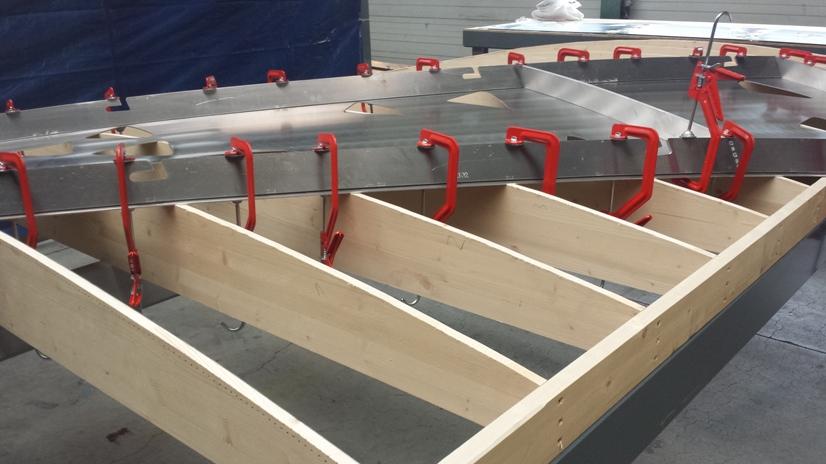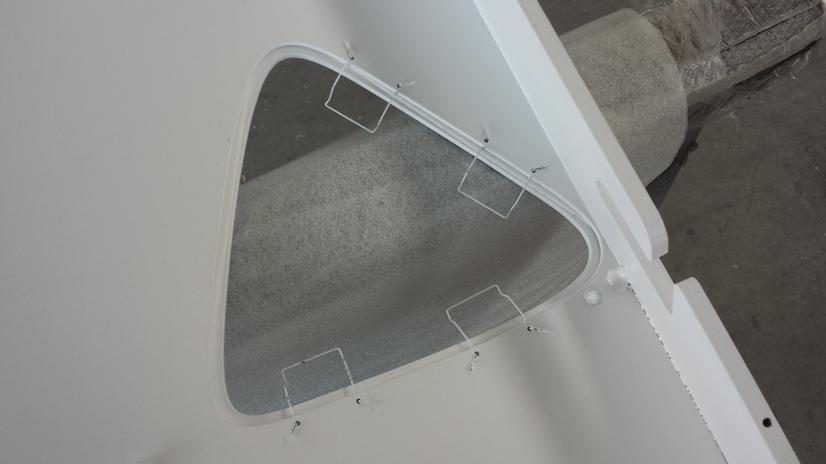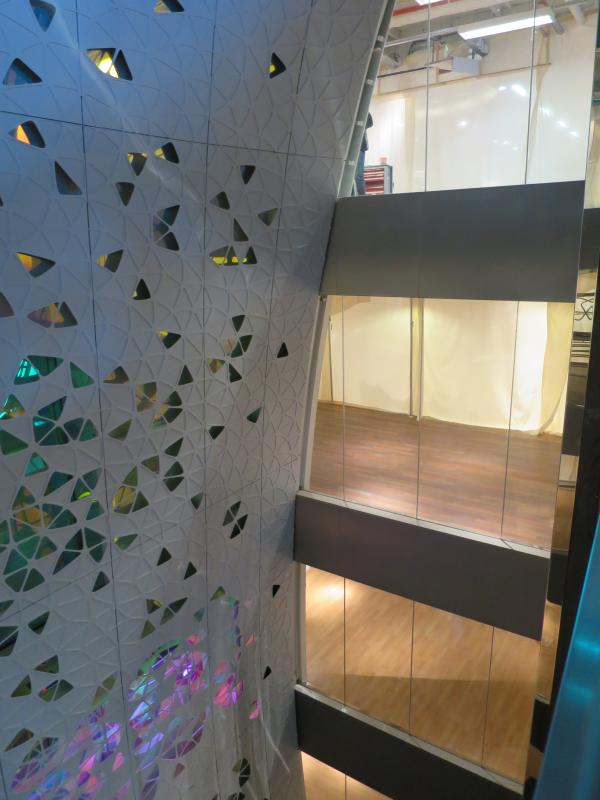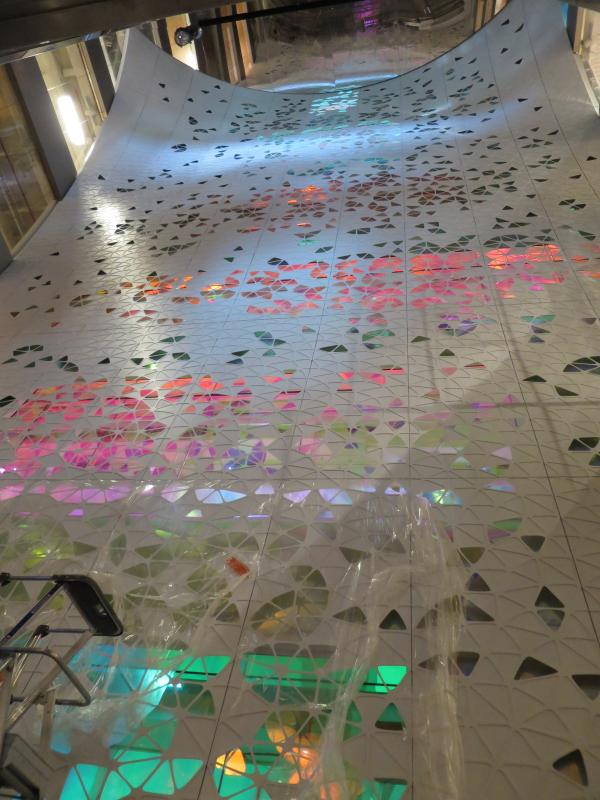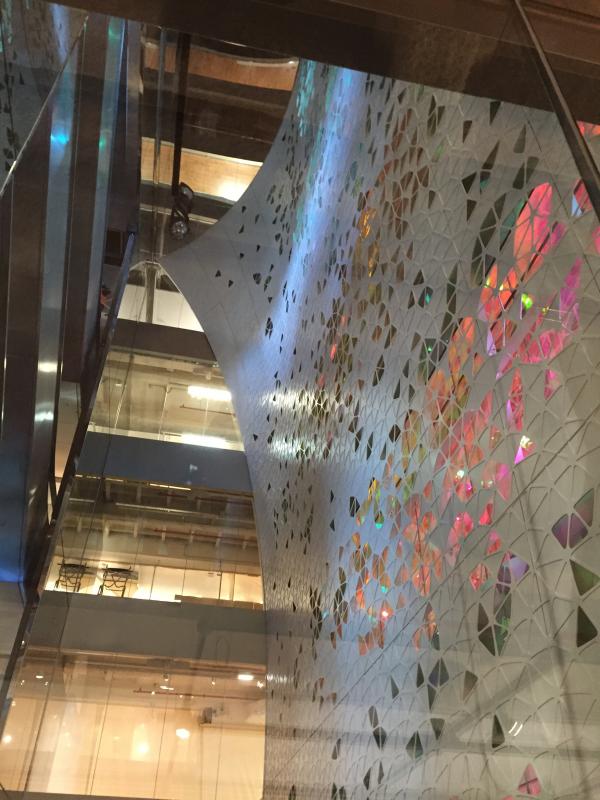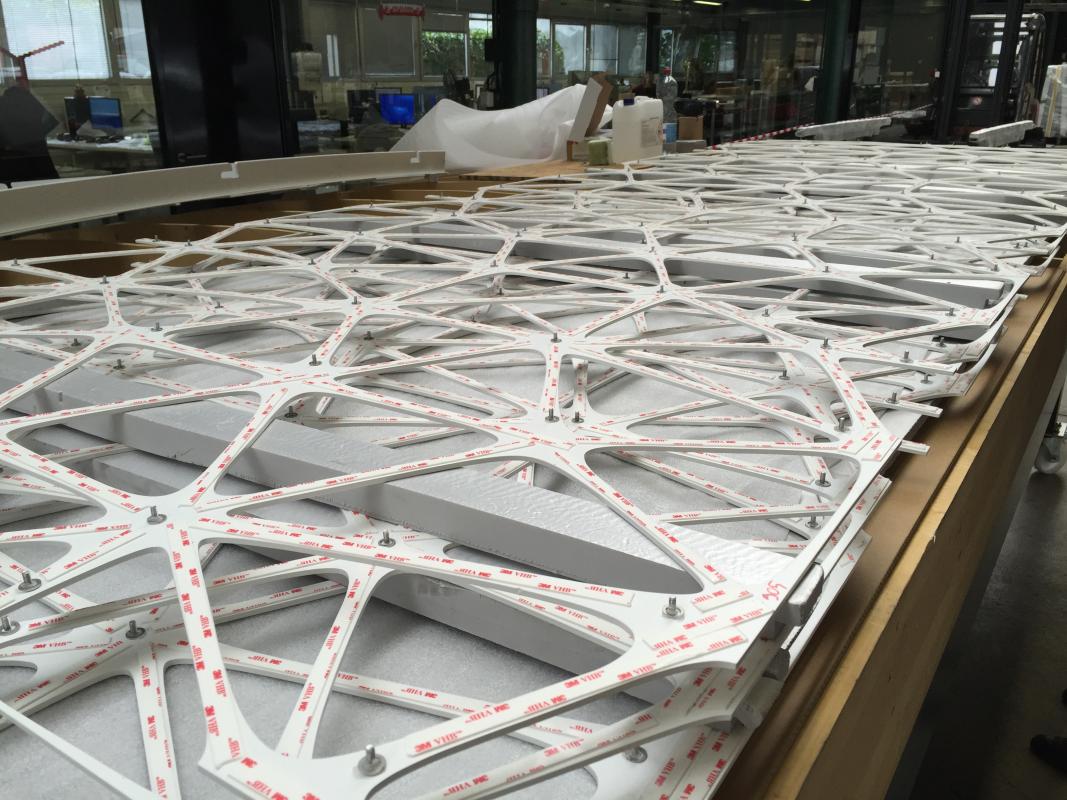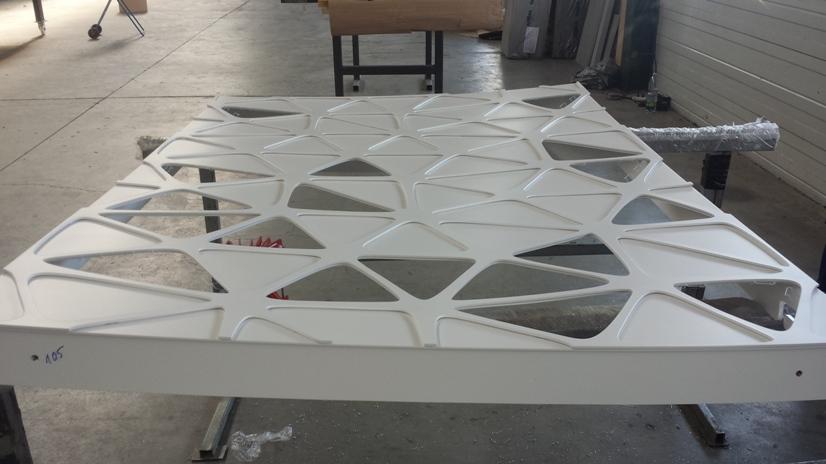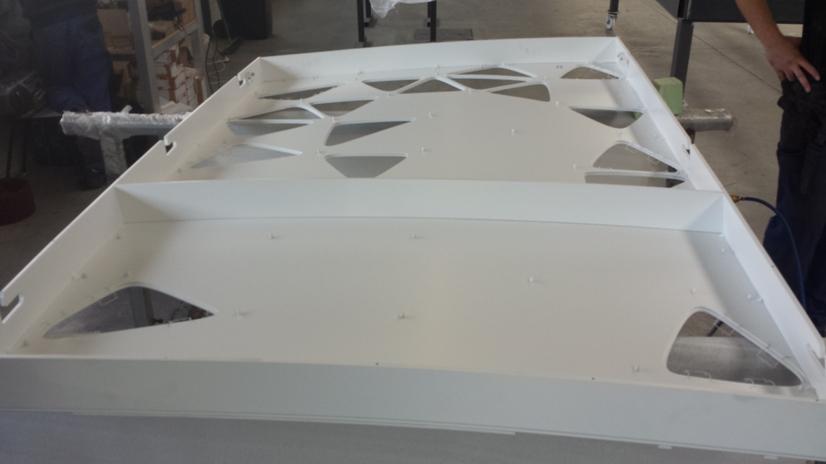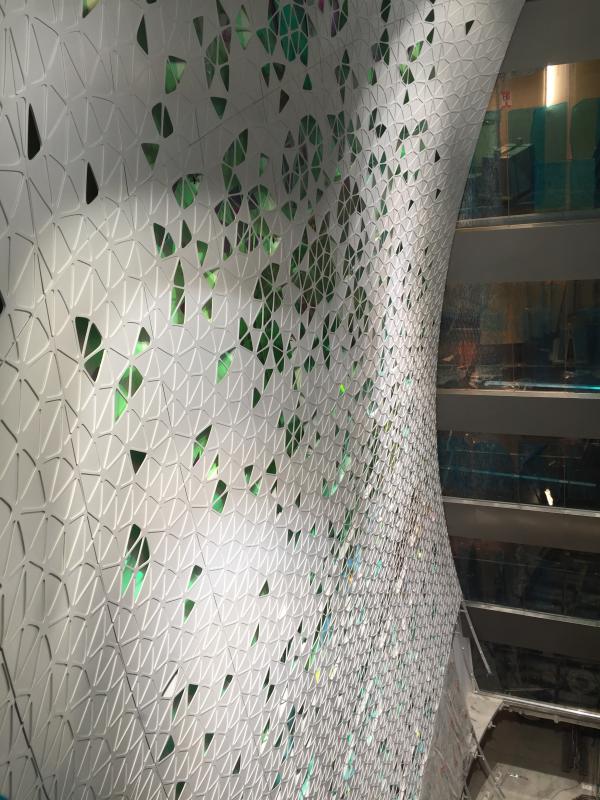
A large 27-meter-high and 14-meter-wide veil clads the void of the escalator atrium
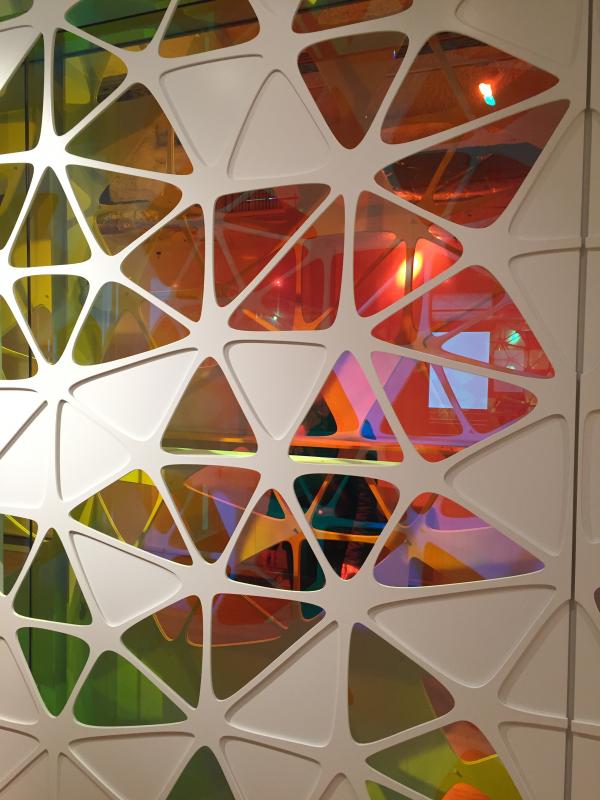
The veil consists of an assembly of approximately 200 perforated aluminum sheet panels
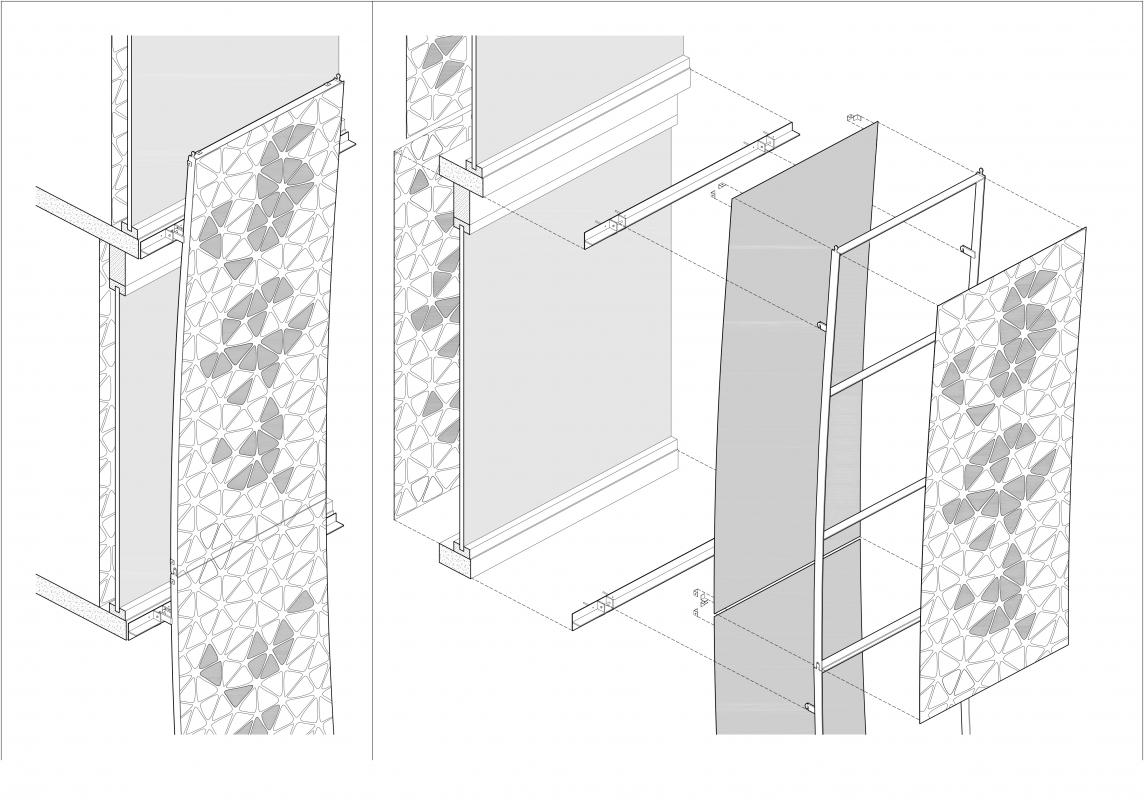
On the void-facing side, the veil consists of a support framework (positioned in front of the fire-rated glazed façade of the atrium), a dichroic glass panel, a peripheral support frame, and a curved perforated panel. On the store-facing side, the flat panels are composed of a dichroic glass layer bonded behind the perforated panel.
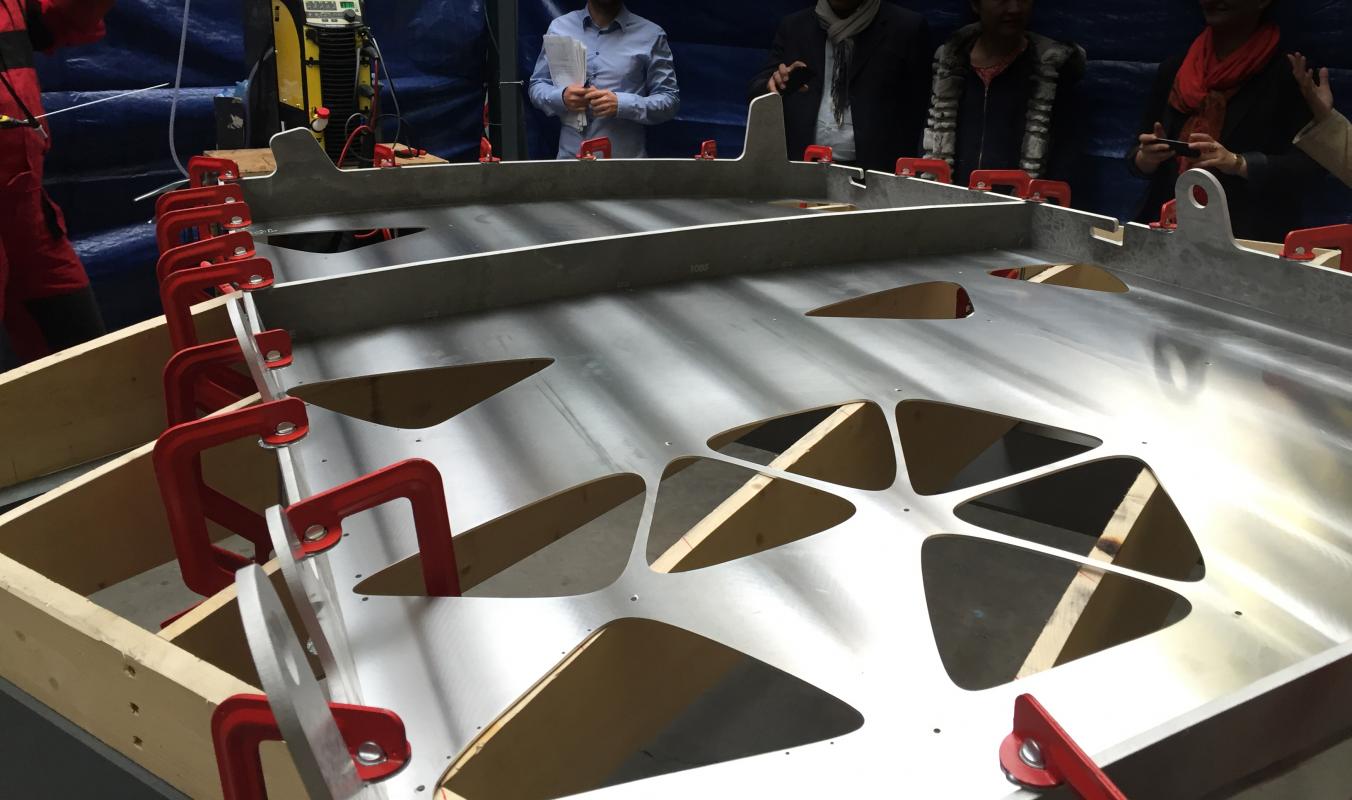
The geometry of each panel, which is always unique, is defined in the workshop using supports designed to achieve a ruled surface.
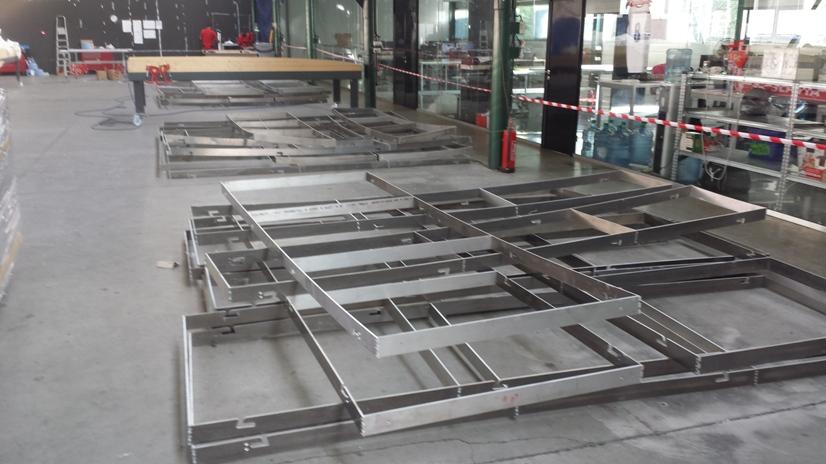
The sheet metal panel is reinforced by a welded aluminum frame attached to the rear side of the sheet, ensuring structural rigidity and maintaining its designed curvature.
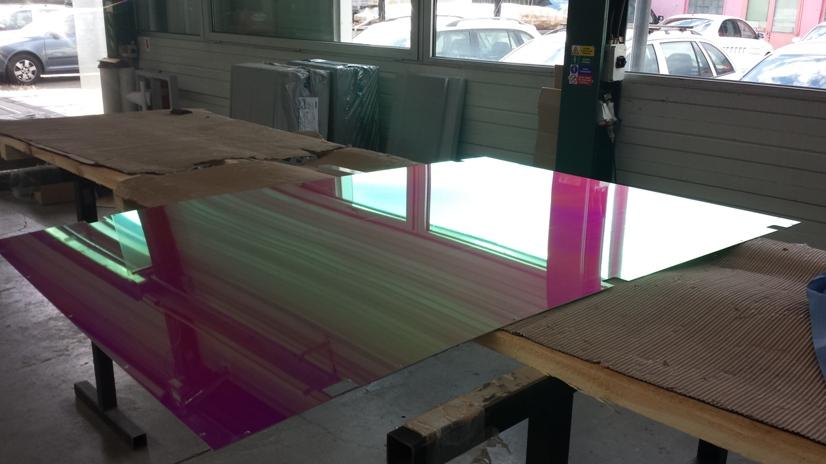
Each panel is fitted with a mirrored glass featuring an interference filter, enhancing its reflective and color-shifting properties depending on the light and viewing angle.
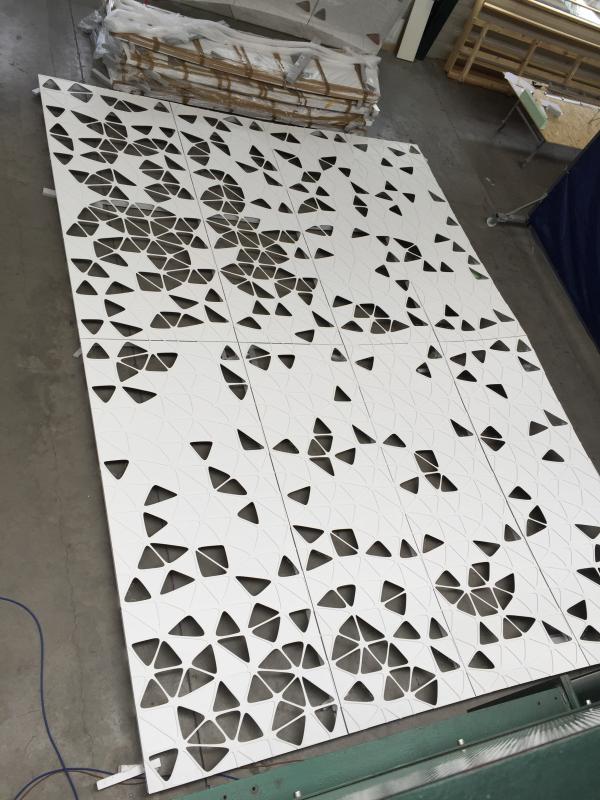
In front of the glazing, the metal frames are clad with precisely arranged perforated sheet metal panels. Each panel is designed to be independently removable, ensuring ease of maintenance and potential replacement without affecting the overall structure.
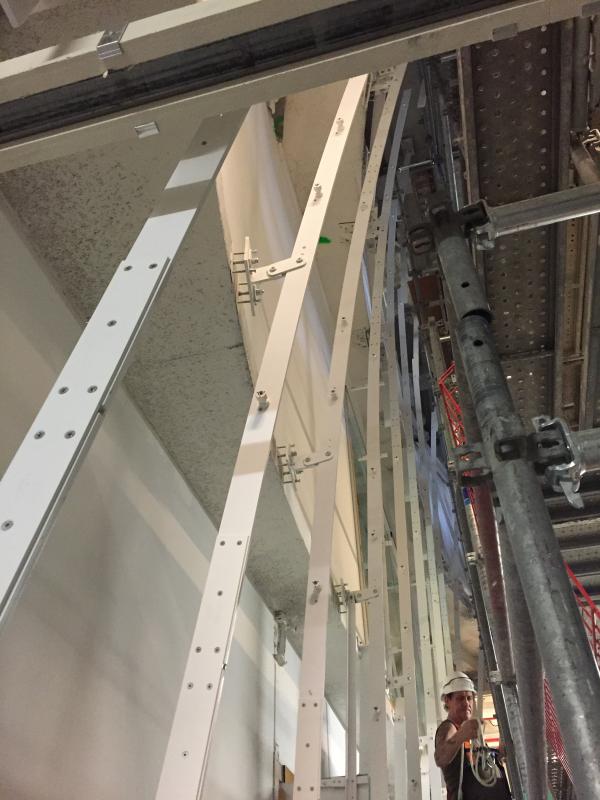
The structural framework system allows for precise adjustment of the panel support, ensuring accurate alignment and a seamless overall appearance.
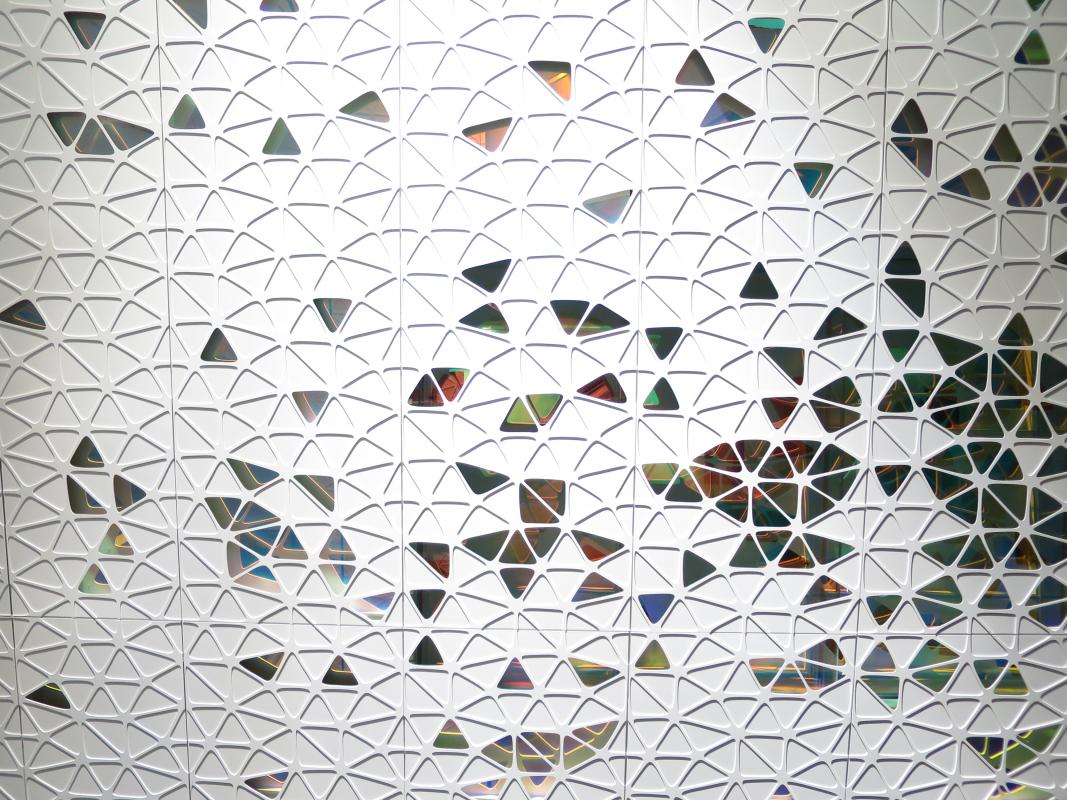
The ensemble of panels creates a cohesive pattern across the entire veil. In total, there are approximately 17,000 perforations, with 10,200 on the void-facing side and 7,100 on the store-facing side.
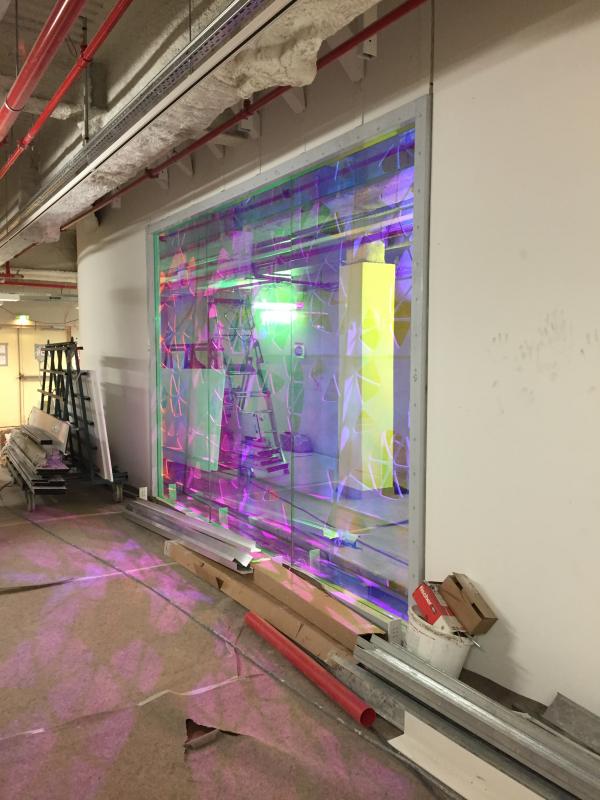
At the various floor levels, transparency over the atrium is maintained. The dichroic glass is installed on the store-facing side, ensuring a dynamic interplay of reflections and colors while preserving visibility.

The mirrored glass is clad with perforated sheet metal panels on both sides of the dichroic glass, enhancing the layered visual effect and dynamic reflections.





